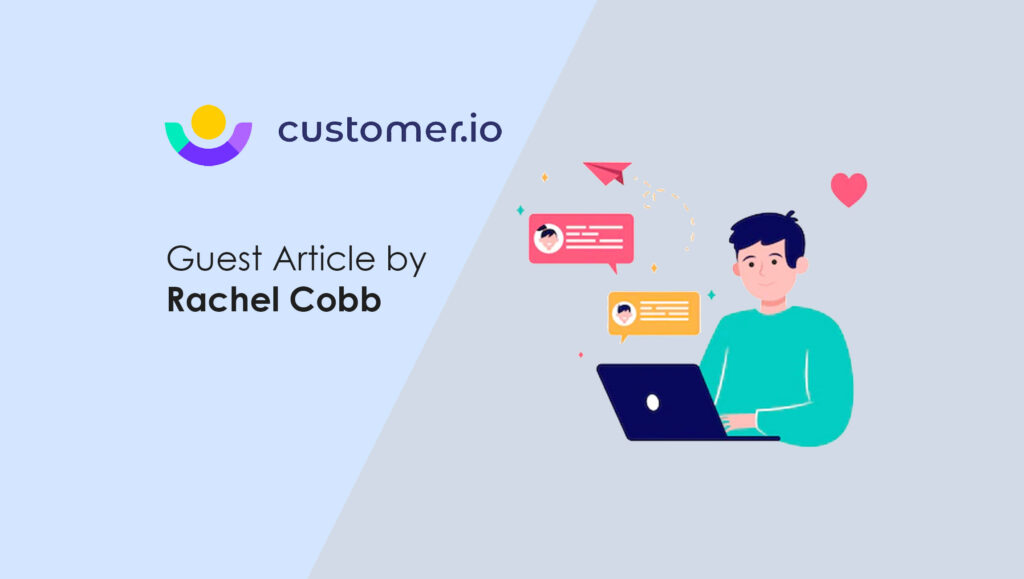Did you know that estimates show the average consumer receives up to 10,000 marketing messages in a day? Oftentimes marketing messages are crucial to your business’s success, so you may be asking how to cut through all that noise? Hint, that’s not the question you should be asking.
Once you have your list of customers or leads, you should be asking how to provide them with the most value and evaluate what strategies you can use to reach the right audience.
Marketing Technology News: MarTech Interview with Ivan Ostojic, Chief Business Officer at Infobip
Let’s examine some key ideas to implement in your messaging strategy.
Set a Limit
It’s true that every message you send is important, but not every message is important to every customer. For e-commerce brands, or if you are trying to turn a lead into a customer, a general best practice is to send emails twice a month and increase it to weekly. If you’ve got great content, or ever-changing offers, or regular promotions, then the weekly cadence is beneficial. The line between being helpful and annoying is a thin one. Be sure to monitor these campaigns and set message limits to help ensure that your customers aren’t getting burnt out on your content.
A message limit is the total number of non-transactional messages that a customer should receive in a given week or month. It’s worth noting here that transactional messages contain information about an action the customer has already taken, such as requesting a password reset or purchasing from your brand. On the other hand, marketing emails push a customer to perform an action. An abandoned cart email, for example, is a marketing message and should be considered in message limits. Transactional messages should be excluded from any type of messaging limits.
If you are using a marketing automation platform that has a message limit feature, then include marketing campaigns in the limit. If the feature does not exist, then you will need to keep an eye out manually. Either way, you will have a better idea of just how much message fatigue you may be creating with your customers if all your messaging is centralized in one platform.
Get Smart
Gone are the days of blasting the same content to every customer. Consumers are looking for messaging that is personalized to them. On the surface, this includes personalization, like first name or even displaying the email in various languages depending on the customer’s location, but the pros take it a step further and leverage behavioral-based sending. If you are using a marketing automation platform, then you will have the ability to not only store data about the customer (like their address, preferences, etc) but also the various activities they may perform on your site or app. These activities can be leveraged to ensure that customers feel “seen” and get content relevant to where they are in the buying process or customer journey.
For example, if you have an onboarding campaign that is trying to get newly signed customers to convert to premium paid customers, your first message may be the same for everyone, but then message two or three can target people differently based on how many times they have logged into the app since joining. The person who is a power user gets different messaging than the person who signed up and never logged in again.
Let your customers tell you what they want
An excellent way to introduce two-way interaction with your customers is a preference page or subscription center form. This lets them tell you what type of information they want to receive. One option to global unsubscribe is the old way of doing things. A subscription center with options on various types of marketing messaging gives you insight into how you can most effectively give the customer what they want.
If you are a tech company that sends newsletters targeted to developers, product managers, and marketers, it may be relevant for individuals to only receive content in their vertical. As a developer, I can have the option of whether or not to receive newsletters with content targeted toward marketers.
Go Multi-Channel
While email is still a primary tool for reaching your audience, the majority of consumers are walking around with a personalized computer in their pockets. Therefore brands leveraging mobile-friendly communication methods are going to have the greatest impact. Go beyond just email and consider implementing SMS in your messaging strategy.
When introducing SMS, it can be beneficial to do some audience research with testing as content can sometimes work better in one format than another – this will depend on your unique customer base. Take appointment reminders, for example. It can be tempting to send a reminder via email and SMS, after all, the information on an appointment is important, right? But remember, the line between helpful and annoying is a thin one, and we want to consider the user experience with every message. If the end user is seeing the SMS on their phone and confirms and then logs into their email to see the same message, they now just go through the steps of deleting the message. This little friction point for the customer should be considered in our messaging strategy. Instead, test sending appointment reminders to customers by splitting your audience with half receiving SMS and half receiving an email. Test for a few months to see which medium has better engagement (like clicking to confirm) and resulted in the fewest appointments missed.
If your brand has an app, then PUSH can also be included in your messaging strategy with a focus on content that is relevant to users when they are logged in.
Data and diversification are the keys to reaching customers at the right time and ensuring that your customers are getting the most value from your marketing strategy. Ensure you are reviewing data on how your customers (or potential customers) are interacting with your messaging to avoid message fatigue, give them ways to tell you what they want, and diversify your strategy to have the greatest impact.
Marketing Technology News: Using Data Analytics to Drive Influencer Marketing Outcomes
In Summary
Marketing messaging isn’t about reaching the most people and being the loudest in the inbox. Finding the communication sweet spot means setting limits, finding out what your customer wants from your content and meeting them on the channels they’re spending the most time on. If you can, leverage an automation marketing platform to get the best picture on all these tactics. You do all this and you want to cut through the noise, customer’s will make sure they’re not missing what you have to say.






















